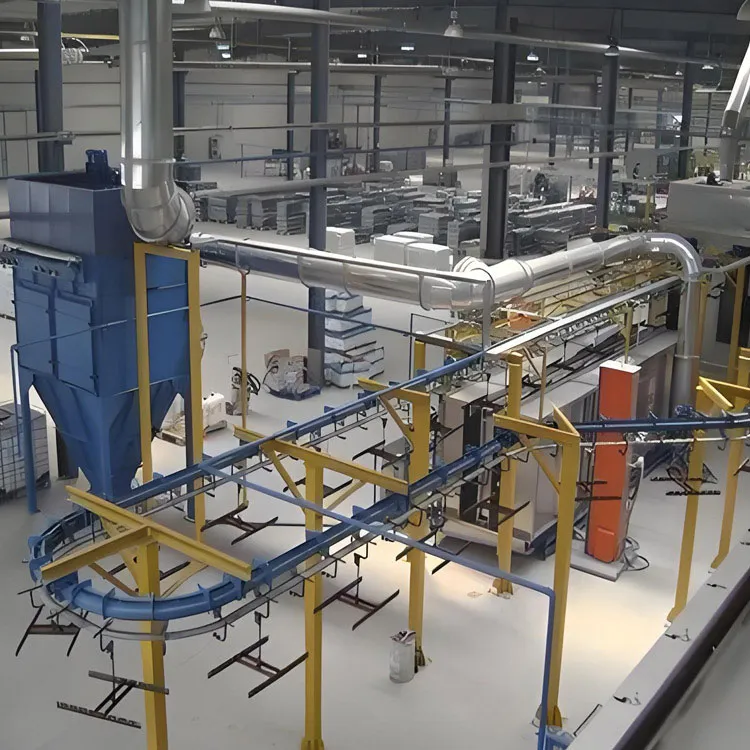Automatic Painting Equipment: Revolutionizing Surface Finishing
2024-12-05
Automatic painting equipment is transforming the manufacturing landscape by offering efficient, precise, and consistent surface finishing solutions. Widely used across industries such as automotive, aerospace, electronics, and furniture, these systems replace manual labor with automation, ensuring high-quality finishes while reducing costs and time.
Types of Automatic Painting Equipment
Automatic painting systems vary in complexity and design to suit specific applications. Key types include:
1. Spray Painting Robots
- Function: Robotic arms equipped with spray guns for precise application.
- Features:
- Programmable paths for consistent coverage.
- Multi-axis movement for complex geometries.
- Real-time adjustments for paint flow and spray patterns.
- Applications: Automotive body painting, consumer electronics, and large machinery.
2. Conveyorized Painting Systems
- Function: Automated systems that move parts through different stages of painting.
- Features:
- Integration with spray booths for controlled application.
- Adjustable conveyor speeds for varying production needs.
- Capability to handle high volumes.
- Applications: Assembly lines in furniture, appliances, and automotive industries.
3. Electrostatic Painting Equipment
- Function: Uses electrically charged paint particles to adhere to oppositely charged surfaces.
- Features:
- High transfer efficiency (reduced paint wastage).
- Uniform coverage, even on edges and corners.
- Reduced overspray.
- Applications: Metal fabrication, electrical components, and pipes.
4. Powder Coating Systems
- Function: Applies dry powder, cured under heat, for a durable finish.
- Features:
- Environmentally friendly (no solvents or VOCs).
- Excellent adhesion and resistance to wear.
- Ideal for high durability requirements.
- Applications: Metal furniture, automotive components, and outdoor equipment.
5. Dip Coating Machines
- Function: Immerses parts in paint and removes excess through drainage or centrifugal force.
- Features:
- Uniform coating thickness.
- Suitable for irregular or hollow parts.
- Applications: Small metal parts, wires, and fasteners.
6. Curtain Coating Systems
- Function: Paint flows like a "curtain" over the object, ensuring complete coverage.
- Features:
- High throughput for flat or semi-flat objects.
- Consistent layer thickness.
- Applications: Panels, doors, and wooden furniture.

Advantages of Automatic Painting Equipment
1. Consistency and Precision
- Uniform application across surfaces.
- Minimized defects like streaks or uneven layers.
2. Increased Efficiency
- Faster processing times.
- High output for mass production lines.
3. Cost Savings
- Reduced labor costs.
- Lower paint consumption due to optimized application.
4. Enhanced Safety
- Limits human exposure to hazardous chemicals and fumes.
- Reduces risk of workplace accidents.
5. Environmentally Friendly
- Minimizes overspray and paint waste.
- Compliance with environmental regulations through reduced VOC emissions.
Key Considerations for Choosing Automatic Painting Equipment
1. Material Compatibility
- Ensure the equipment supports materials like metals, plastics, or wood.
2. Production Volume
- Choose systems suited for batch sizes—small-scale production or high-volume manufacturing.
3. Type of Coating
- Ensure compatibility with paints, powder coatings, or specialized finishes.
4. Automation Level
- Options range from semi-automatic systems to fully automated robotic solutions.
5. Space and Layout
- Consider the required footprint and integration with existing production lines.
Industries Leveraging Automatic Painting Equipment
1. Automotive: Car bodies, rims, and engine parts.
2. Aerospace: Aircraft fuselages and interior components.
3. Electronics: Smartphone cases, laptop shells, and circuit boards.
4. Construction: Pipes, structural steel, and window frames.
5. Furniture: Wooden and metal furniture for enhanced aesthetics and durability.
Conclusion
Automatic painting equipment is an indispensable tool in modern manufacturing. By improving efficiency, reducing costs, and ensuring consistent finishes, these systems empower industries to meet high-quality standards while maintaining profitability. As automation continues to evolve, the role of automatic painting equipment will only grow, making it a cornerstone of advanced manufacturing processes.


